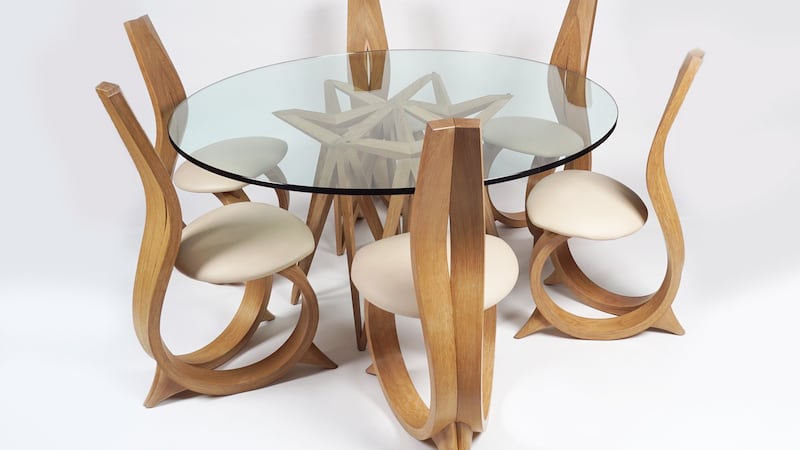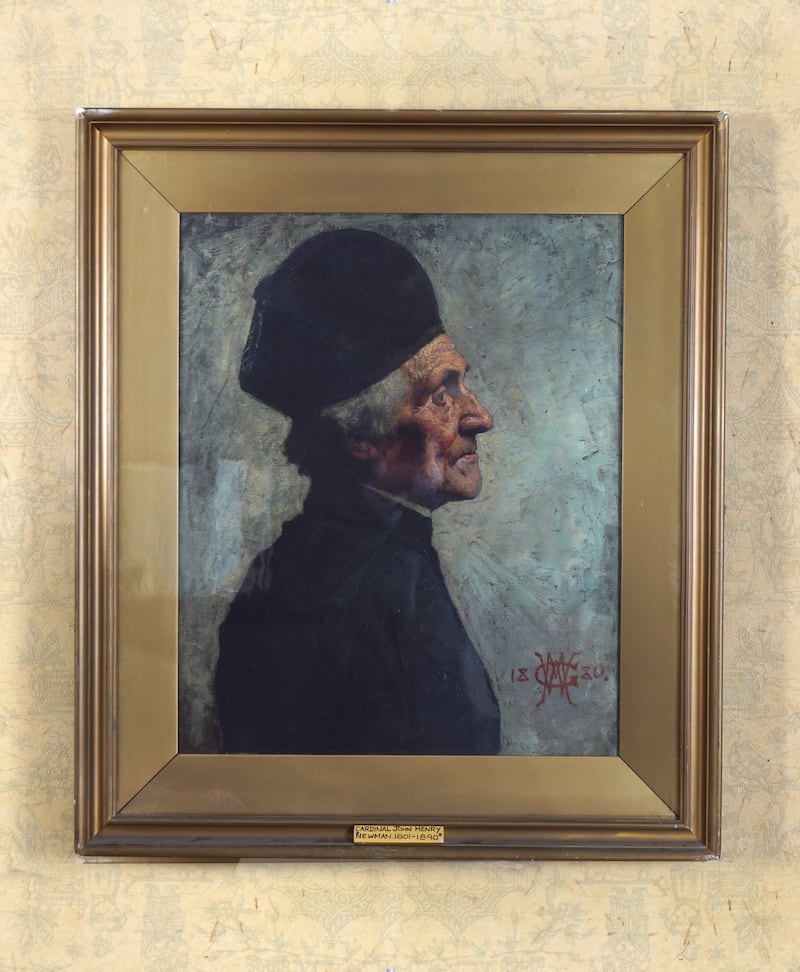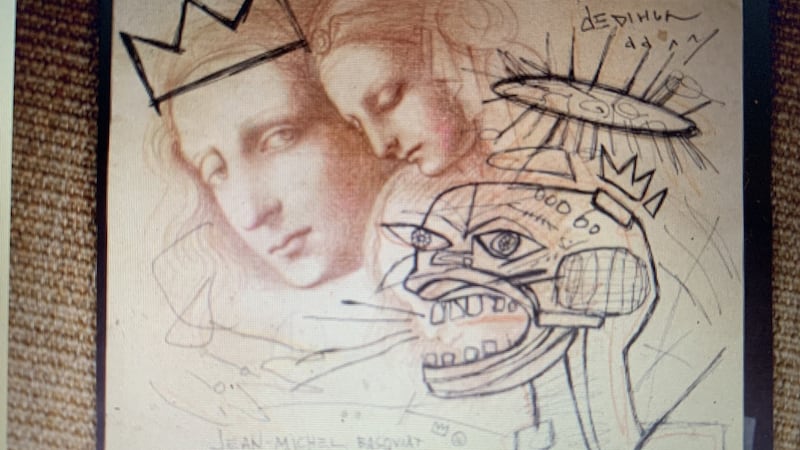Sheppard’s Great Irish Interiors sale, which will be held in a live online auction on April 28th and April 29th lists two important tables. Both were designed by Cork men but created almost 150 years apart.
They could not be more different – from a profusely carved 19th-century piece with a nationalist narrative, to the ethereal blonde ash table and chairs made in an old potato barn in 2001.
John Fletcher's Shamrock Table, a 19th-century piece with three leaves in the shape of a shamrock, was created in Cork in 1852 but failed to sell when exhibited at the Irish Industrial Exhibition. Emblazoned with Irish symbolism in 13 different woods, the words, "as fada do shúan a chruit"(long has been thy slumber, O Harp) lie under a bare-breasted Erin carved in white chestnut. It has a profusely carved base depicting two ancient warriors and a harpist on a central tripod. As it remained unsold, the table left for New York in 1853, which inspired the ballad by poet Daniel Casey, "The Lament on Fletcher's Shamrock Table on its Departure for the New York Exhibition" (Lot 805, €60,000-€120,000).
A century and a half later Cork native and self-taught designer Joseph Walsh, who began learning about woodwork at the age of eight from his grandfather James Duignan, got his breakthrough in 2008 with a solo exhibition in New York. Today his curvaceous ribbon-like shapes, created from ash at his studio in Kinsale, are held in many institutions and private collections worldwide, including a family chapel in Verona, the Metropolitan Museum of Art in New York and Centre Pompidou in Paris. His extraordinary pieces, which at times resemble hand-pulled satiny threads of nougat, have sold for up to €600,000 which is some accomplishment for a craftsman, without formal training, just short of his 40th birthday.

Visitors to the National Gallery on Kildare Street will be familiar with his sublime Magnus Modus, the towering free-form sculpture that lives permanently in the new gallery courtyard. His table and six chairs, lot 745, are listed at €40,000-€60,000.
Cardinal Newman
Also featured is a death mask of Patrick Kavanagh (lot 529, €4,000-€6,000) and an unusual offering from Graham Knuttel – a papier mache sculpture of a seated James Joyce. It is listed with a €14,000-€18,000 estimate, which will, if achieved, be a tidy return for the vendor as it was purchased for €1,800 at the Adam's Irish Art sale in 2017.

A lovely portrait of Cardinal John Henry Newman also features (lot 157, €1,500-€2,000). The controversial figure was instrumental in founding what is now University College Dublin and its oldest debating society, the Literary and Historical Society.
One of the most expensive works of art in the sale is lot 67, which is black marker graffiti over an old religious sketch. It is described in the catalogue as “American Neo-Expressionist Drawing” and “Bears the name Jean-Michel Basquiat”. Basquiat, who died from a heroin overdose aged 27, is regarded as one of the most influential artists of the 20th century and his work has steadily risen in value. At a Sotheby’s sale in 2017, Untitled achieved $110.5 million (€91.9m) setting a record for an American artist at auction.
When an auction house states “bears the name” it means they are unsure if it is a work by the artist whose signature it bears. Therefore if it is not genuine the buyer has no recourse on monies paid.

"Without access to the necessary expertise, we have no way of determining with certainty if the work is genuine or not," says Phillip Sheppard of the auction house when asked if the painting is authentic, adding: "The picture was inherited without any known provenance by the present owner."
The vague provenance in the catalogue states: “Private Collection, Old Master and Contemporary Drawings; New York.”
With an estimate of €8,000-€12,000, plus fees, it’s quite the gamble to take on work whose authenticity remains unconfirmed.












